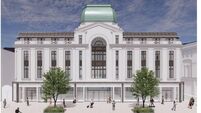Space tourism to take off with affordable rocket ship
The Lynx, about the size of a small private plane, is expected to begin flying in 2010, according to developer Xcor Aerospace.
The company said, pending the outcome of negotiations, the Air Force Research Laboratory has awarded it a research contract to develop and test features of the Lynx.














